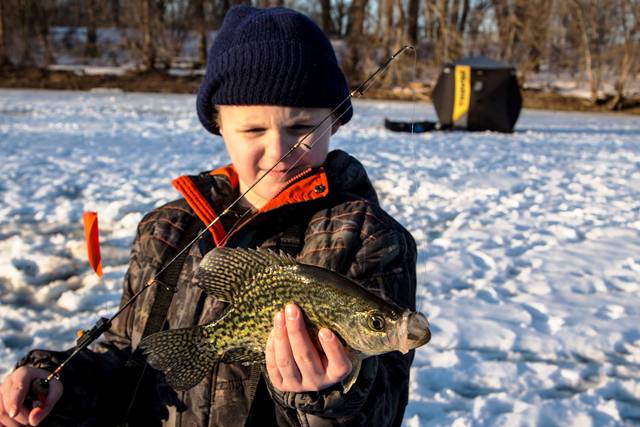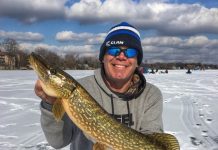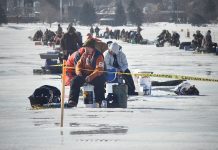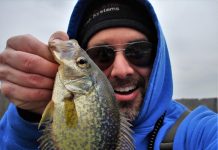Winter in the Midwest is a short, but intense season. With temperatures that start out at a potential of 25 degrees below zero to a balmy 30 degrees the next day, it makes the season as undesirable to most as it is unpleasant to many.
One of my favorite ways to pass time in the winter is ice fishing. The ability to walk out to my favorite fishing hole, plop down, drill a few holes in the ice, and catch nice bass, pike, or bluegill is a great way to connect with family in the close quarters of an ice fishing shack, or play a quick pick up game of toss with buddies.
How to Get Started
The best way to get started is to simply go with someone you know. Ask a buddy from work, a family member, or even a local professional to get you out on the ice those first few times. See how they do and the techniques they use. Most importantly, ask questions! The best way to learn is hands on.
Then, once you are past the intermediate phase and have discovered you like the sport, start shopping for gear. Most bait and tackle shops are great places to find the right start-up kits with knowledgeable staff to answer questions and point you in the right direction based on the right gear selection and desired species of fish you want to pursue.
The average start-up kit from ground zero is roughly $300-$400 that will include a strike master hand auger, (my preference, the laser model $90.00) a few halfway decent rod and reel combos (average cost $20.00 each), a portable shack (clam thermos are my preferences $150.00), some tip-ups ($20.00 each), a good spud ($30.00), and a Mr. Heater ($70.00)
Where to Go
The biggest question I get as a local fishing pro is “where do I go?” or “where are they biting?” Like open water fishing, the fish move, so the only answer I can give is to watch the crowds, and go where you feel comfortable.
If I am taking my family, I want a fishing location that is going to have a heated bathroom close-by and someplace that is easy to access both on and off the ice for the unskilled legs of my children.
Reading fishing forums like Hotspot Outdoors is a good place to start because it will give you a sense of what species is more active, and the type of fishing being done to catch them. Another great tool to use on the ice is Fishidy’s mobile app. The combination of GPS technology and mapping features can pinpoint where you want to start drilling holes over key structure like deep weeds, drop offs and fish cribs.
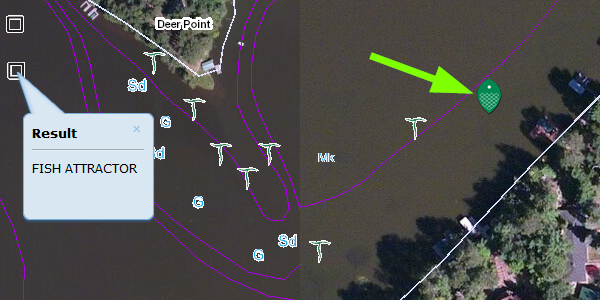
Staying Comfortable
Staying comfortable is key for making any outdoor experience a positive and long lasting one. To keep warm, I rely on Hot Hands hand warmers. Pop them open before leaving the house, and keep them exposed to the air as much as possible before getting to the fishing location, and they’ll be nice and toasty when you need them.
I also carry with me a foam floor mats. I like to toss them on the ice to keep the cold from seeping up from the ice through my kid’s boots to help keep their feet warmer a little longer. Should their feet get cold, I have them remove their boots, stand on the mat, and place the heater in front of them for a quick warm-up.
Is It Safe to Go Out There?
Safe is a word based on perception. The biggest element of ice fishing isn’t falling through the ice, its falling on the ice. According to OSHA, the leading government agency that monitors workplace injuries, the leading cause of injuries in the fishing/outdoor industry is slips and trips.
To gauge the safety level of the ice, I never leave home without my spud, especially during first ice when the ice is at its thinnest. Gauging ice depth is nice, but overall you want to monitor its hardness. I like to give the spud 3-5 good whacks on the ice before it breaks through to determine the hardness. The more whacks the ice can take, the harder and more sustainable the ice is.
For my personal safety gear, I recommend Yak Trax Pro or Yak Trax Extreme. These two models both have a strap that goes across the top of the user’s foot and better secures the unit to the boot.
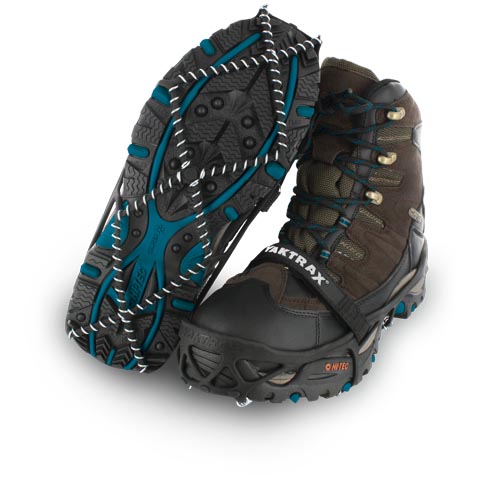 To prevent further slipping and to keep my feet warmer, I carry padded floor mats with me at all times. When I get set up; I toss the mat on the ice, and I can stand or sit on the ice for longer periods of time before the cold seeps through to the bottom of my boot. This also gives me something to kneel on when I am pulling in fish, or setting up gear.
To prevent further slipping and to keep my feet warmer, I carry padded floor mats with me at all times. When I get set up; I toss the mat on the ice, and I can stand or sit on the ice for longer periods of time before the cold seeps through to the bottom of my boot. This also gives me something to kneel on when I am pulling in fish, or setting up gear.
Driving on the ice is never recommended but done anyways (including yours truly, ahem). The biggest thing to keep in mind when driving on the ice is to never go faster than 20 mph, as this will cause shock waves in the ice, which will shatter as the car passes over the weak points. Also, leaving a car parked on the ice for long periods of time will weaken the ice; as the car builds up heat from the sun and radiates it onto the ice beneath.
In short, don’t stray from the ice roads, and don’t park by other cars if it can be avoided. To extract a car from the ice, the start-up cost is $2,500.
Ice fishing is a family friendly sport and one of the fastest growing sports in the fishing industry. New technologies in clothing, shacks, and electronics have made the sport more pleasurable and user friendly. I encourage families to go out and give it a try!

